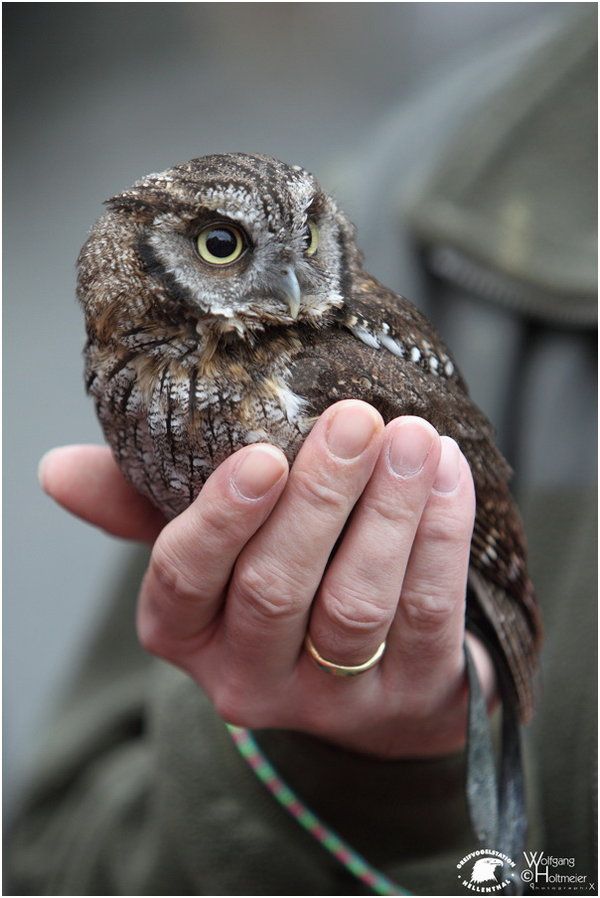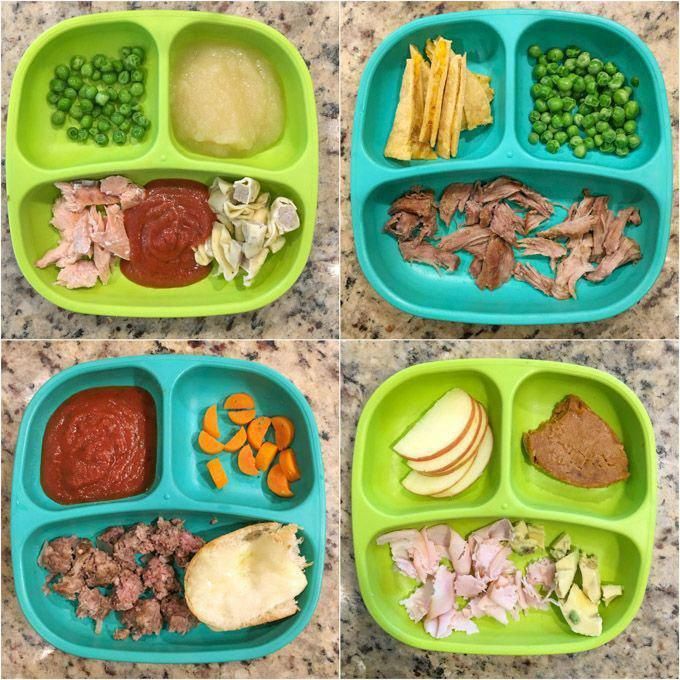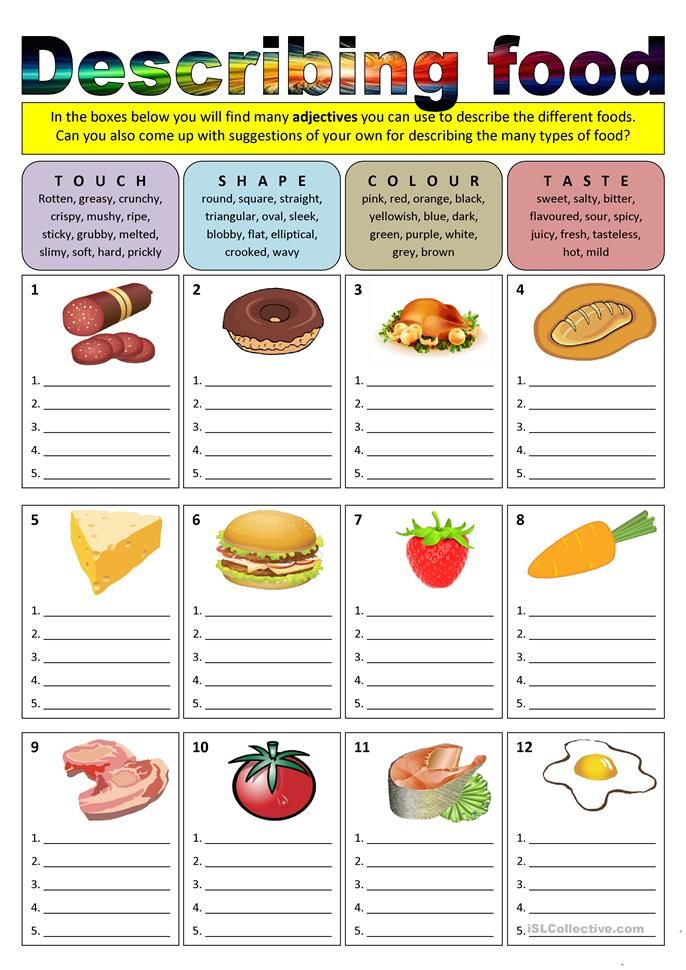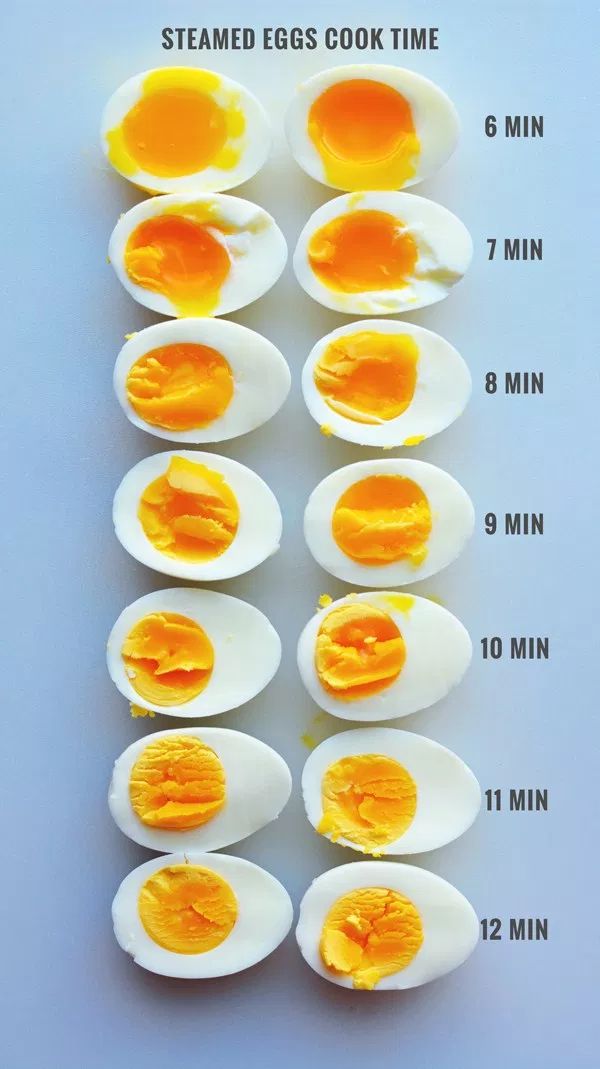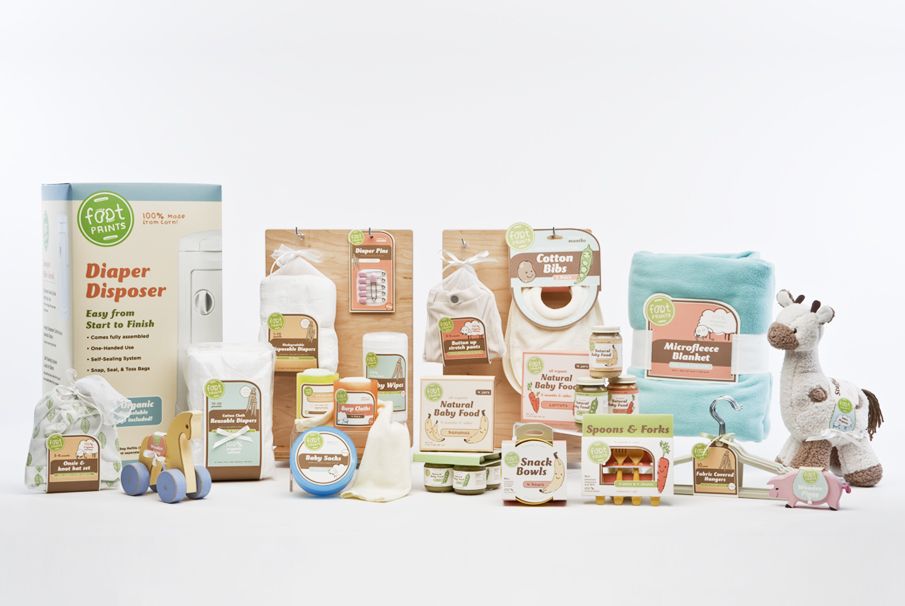Hand feeding baby owls
Short-term care of a wild Barn Owl
This is a do-it-yourself guide for small to medium-sized owls
Administering fluid
It is important to recognise that owls rarely drink and gain virtually all the fluid they require from their food. Therefore, when an owl has not fed for more than a few days it becomes susceptible to dehydration, which can rapidly lead to organ failure and death. The severely emaciated individual will need re-hydrating before any attempt is made to feed it solid food. There is little point in putting a small bowl of water in the bird’s box, as the chances of it drinking are extremely slim.
When faced with a dehydrated bird, the experienced vet or rehabilitator will waste no time in re-hydrating it using a syringe and straight semi-rigid tube of exactly the right length. This technique should not be attempted by anyone who has not been shown exactly how to do it or does not have the right type of tube.
How to administer fluid
Although the process is slow and requires considerable patience, birds can be re-hydrated using a small soft artist’s paintbrush or a dropper. One teaspoon of glucose powder (or sugar in an emergency) should be dissolved in half a cup of boiling water and then left to cool until it reaches blood temperature or slightly higher (38-40 °C). Dip the paintbrush in the glucose solution and wipe it up and down the side of the owl’s beak. Some birds will respond by swallowing, although most will not. Plan B is to hold the beak open (no more than 25mm, less for a Little Owl) with one hand and touch the saturated brush on the back of the gape with the other hand, just beside the back of the tongue. Immediately let go of the beak and allow the bird to stop swallowing before opening the beak again. With care, fluid can be placed at the same spot using a dropper but never more than a few drops at a time.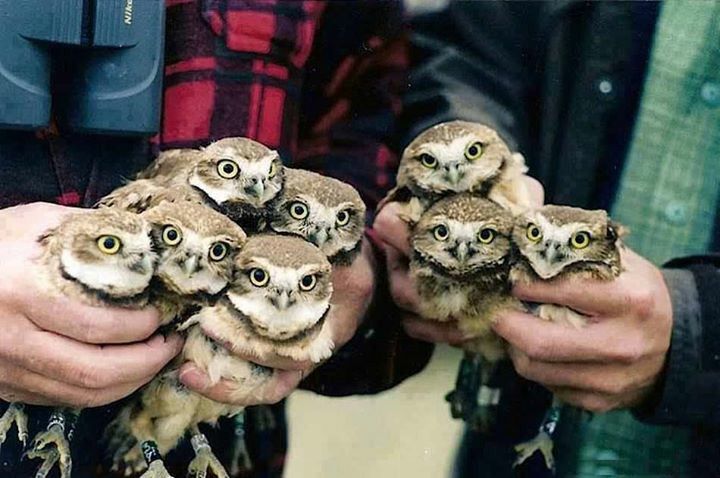
How much fluid to give
Ideally, about 10 ml of fluid should be given. However, this requires considerable patience as 10 ml of fluid is the equivalent of around 150 drops. Continue with either method, administering as much fluid as possible. Leave the bird for a couple of hours then administer another 10 ml of fluid (2 teaspoons), followed by a few pieces of wetted food (see below). To start with, food morsels can be dipped in the glucose solution immediately prior to being given to the owl; this helps to stimulate swallowing and increases the fluid intake.
Barn Owls usually get their moisture intake from their food, so liquid that is administered separately is normally a supplement. The liquids will help avoid organ failure, which is a common cause of death in Barn Owls that have not eaten. 5 – 10 ml per day for one or two days may be sufficient, as long as the bird is eating. However, if the bird regurgitates food, then 5 – 10 ml of liquids can be administered three time a day.
Occasionally, a vet will recommend giving an emaciated owl liquid food such as Brand’s Essence or a soupy mixture of Hill’s Prescription Diet A/D mixed with slightly warm water. If you happen to have either of these, they may be given by paintbrush in addition to the glucose solution. Give up to 5 ml (1 teaspoon) daily as a supplement.
Please note that owls do not have a crop so the term ‘crop-feeding’ or ‘crop tubing’ should not be used.
Doing it on your own
Giving fluid is far easier if you have a helper to hold the bird. However, if you are on your own the most practical way to do it is to wrap the owl first in a towel and then adopt a sitting position. Loosely wrapping an owl is no help at all so please read How To Towel Wrap An Owl before you start or watch the video.
Feeding owls in care
It probably won’t eat
First and foremost, do not ever expect a newly arrived wild adult owl to eat voluntarily. Virtually all injured owls require a period of force-feeding before moving on to hand feeding or eating voluntarily.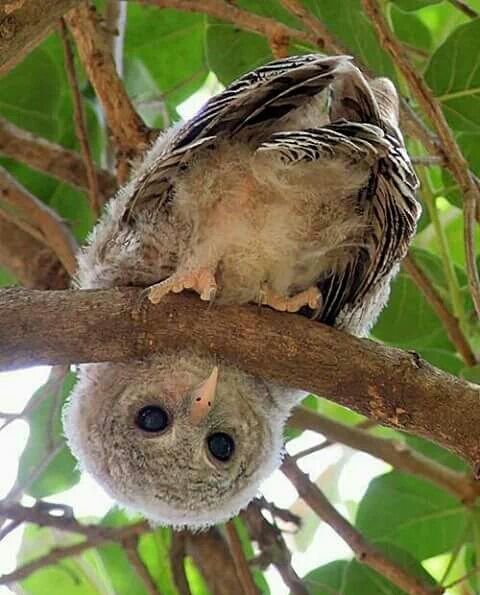 In short-term care (i.e. up to 10 days) many adult birds will need to be force-fed throughout, whereas others, particularly nestlings, may be eating voluntarily within 12 hours. A casualty or starving adult owl that picks up food items straight away and eats them voluntarily is almost certainly a bird that has escaped or been released from captivity.
In short-term care (i.e. up to 10 days) many adult birds will need to be force-fed throughout, whereas others, particularly nestlings, may be eating voluntarily within 12 hours. A casualty or starving adult owl that picks up food items straight away and eats them voluntarily is almost certainly a bird that has escaped or been released from captivity.
What to feed a casualty owl
The best possible food for a casualty owl is that which most closely resembles its diet in the wild. Dead small mammals such as mice and young rats are ideal food, although they are rather expensive and for this reason the staple diet of most owls in captivity is dead day-old poultry chicks. In emergencies it is acceptable to use small pieces of raw chicken or raw lean beef but not lamb or pork. Do not give pure lean meat without roughage (such as fur or feathers) for more than 2 days at a time and never give bone without roughage. This is because the acidity of the stomach pH is not strong enough to dissolve bone and so the bones are regurgitated in pellets. If the bones are regurgitated without being bound in fur or feathers, they may obstruct or puncture the oesophagus. Never use cooked meat, canned pet food or any non-meat food (other than certain liquid feeds which may be prescribed by a vet in certain circumstances). Dead day-old poultry chicks and mice are available frozen from many pet shops and must be thoroughly defrosted before use, though not by using a microwave as this can make the bones brittle.
If the bones are regurgitated without being bound in fur or feathers, they may obstruct or puncture the oesophagus. Never use cooked meat, canned pet food or any non-meat food (other than certain liquid feeds which may be prescribed by a vet in certain circumstances). Dead day-old poultry chicks and mice are available frozen from many pet shops and must be thoroughly defrosted before use, though not by using a microwave as this can make the bones brittle.
How much to feed
Adult Barn Owls, Long-eared Owls or Short-eared Owls should consume approximately 2 chicks or 4 mice per 24 hours; a Tawny Owl should have 3 chicks or 6 mice; and a Little Owl 1-2 chicks or 2-3 mice. A wild owl is unlikely to recognise white mice or yellow chicks as food straight away but grey-brown food items may be eaten more readily. White or yellow-coloured food items should be cut up into 3-4 pieces and placed on a piece of wood or an upturned bowl in the box close to the owl, preferably with the innards of the food item facing up.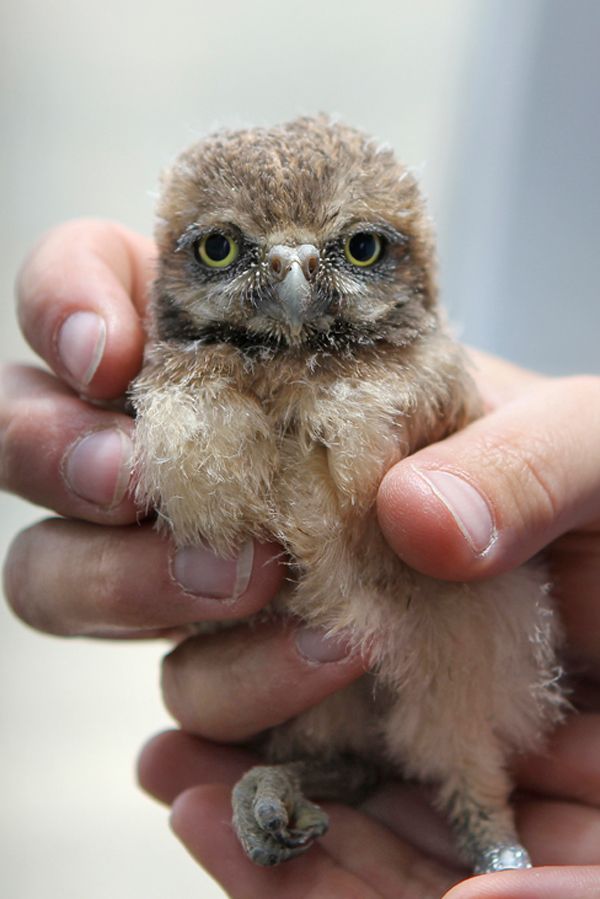 Do not put the food in a dish, otherwise a single dropping can easily contaminate all of it.
Do not put the food in a dish, otherwise a single dropping can easily contaminate all of it.
How to force-feed
Watch the video on how to feed an owl
1. Prepare the food. If using lean chicken or beef to feed a Barn Owl more than 6 weeks old, the total amount you should prepare for 24 hours is around 70 grams (this is about enough to fill two small matchboxes) or use 4 average-sized mice. When first feeding a new casualty, you probably will not use more than a few morsels. Make sure the meat is fresh, at room temperature, and not dried. Cut up into pieces about the size of your thumbnail. If using day-old poultry chicks, discard the yolk sacs and the featherless part of the legs. Cut each chick into 6 pieces of roughly equal size. Holding the day-old chick above newspaper and using scissors is a practical method. If force-feeding a Little Owl use pieces no bigger than the size of your finger nail.
2. Position the owl. Either ask a helper to hold the owl in a vertical position or wrap the owl, then sit on a stool and place the wrapped owl vertically between your thighs, facing either to the left or right, depending on whether you are left or right handed.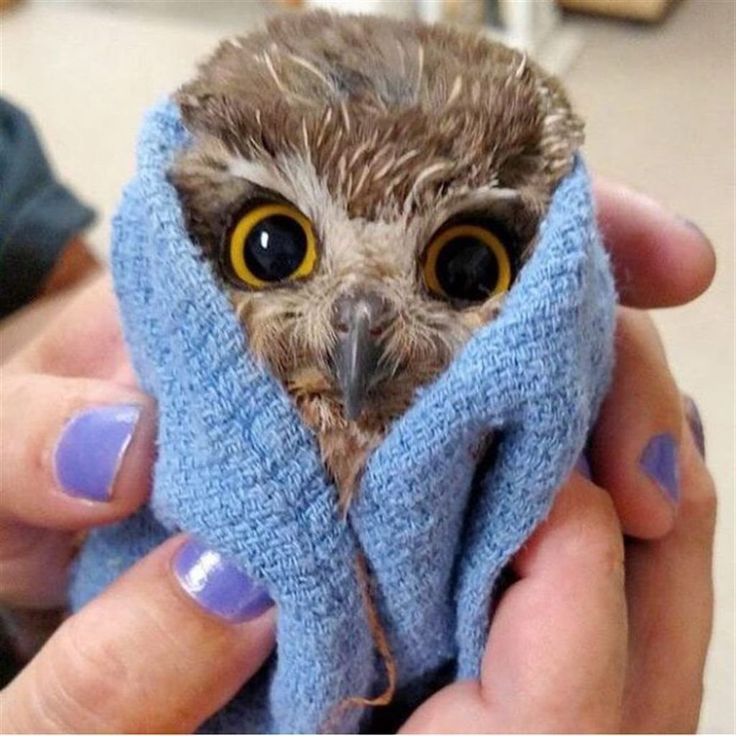
3. To open the beak, calmly bring one hand from behind the owl, just over the head, and take hold of the upper mandible between your thumb and index finger. Open the beak with the thumbnail of your free hand (max 25mm, less for a Little Owl) and hold it open with the 2nd or 3rd finger of your beak-holding hand.
4. Feed one piece at a time. Now with your free hand take a piece of meat/mouse/chick, briefly dip it in tepid fluid and then put it on the tongue and gently push it into the back of the open gape, so that it is in the throat just behind the windpipe opening (at the back of the tongue). Immediately release the beak and with any luck the owl will swallow within roughly a minute. If it does not, gently push the food a little further down the throat and release the beak again. Eventually it should swallow. Wait 30–60 seconds after the swallowing has stopped and then repeat the procedure. Even if the feeding is easy, always wait before giving the next morsel. This gives time for the previous one to move down the neck and reduces the chance of food regurgitation.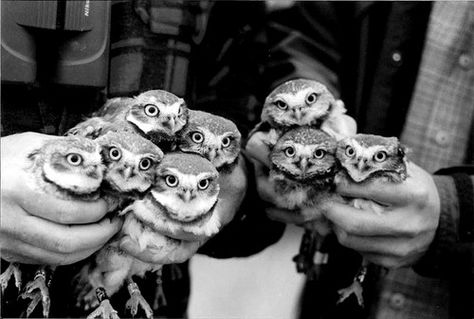
5. Watch the owl and always be sensitive to its response. If it has swallowed several morsels quite easily and then becomes reluctant, leave it for about 10 minutes and try again. If it is still reluctant, leave it for 8 hours then try again. Also take account of the bird’s condition; if it is in the process of drying out or warming up and starts to shiver, stop the feeding and return it to a warm position. If it is very thin, remember that for the first 24 hours, fluid is a higher priority than food.
Suitable containers for owls in short-term care
Solid-sided plastic pet carrier boxes are good, but can be hard to clean out unless they come apart easily. If you are only keeping the owl for a short time and have an ample supply of cardboard boxes, there is no reason why you should not keep the bird in a cardboard box and simply replace the box every day, recycling or composting the old one. Alternatively, use an open-topped plastic storage box with a fridge shelf or a piece of weld mesh weighted down on top. Whatever container you use, it only needs to be slightly taller than the owl, at least the same width as the height, and twice as long. The best thing to place in the bottom of the box is a thick towel wrapped around a newspaper folded to size. This aids checking for any change in the colouration of droppings and makes it easy to spot uneaten food items and pellets. Once the owl is eating well, the box lining is usually changed to a thick layer of heavily compressed shredded paper (c. 200mm of shredded office waste trampled down to 30mm). The use of straw, hay, woodflakes, sawdust, sand or gravel is not recommended.
Whatever container you use, it only needs to be slightly taller than the owl, at least the same width as the height, and twice as long. The best thing to place in the bottom of the box is a thick towel wrapped around a newspaper folded to size. This aids checking for any change in the colouration of droppings and makes it easy to spot uneaten food items and pellets. Once the owl is eating well, the box lining is usually changed to a thick layer of heavily compressed shredded paper (c. 200mm of shredded office waste trampled down to 30mm). The use of straw, hay, woodflakes, sawdust, sand or gravel is not recommended.
Other relevant pages:
- Should I pass it on?
- Finding a rehabilitator.
- There is more on this topic in the Barn Owl Conservation Handbook.
Raising a Baby Owl Is Hard Work
Young owls look mighty different than their adult counterparts. Just take a look at one of our current patients, a baby Great Horned Owl that was admitted to the care center after its nest was found on the ground. When it arrived, the healthy nestling was just a few days old and hadn’t yet opened its eyes.
When it arrived, the healthy nestling was just a few days old and hadn’t yet opened its eyes.
Like most baby birds, owls of this age are wrinkly, rounded and partially bald; what’s particularly striking is the difference in appearance between baby and adult owls’ head shapes. Youngsters like this Great Horned Owl haven’t grown in their facial disk feathers, which means you can see the birds’ underlying bone structure.
This little dinosaur doesn’t just need to grow its adult feathers, but also has some rapid height and weight gains ahead. Great Horned Owl hatchlings shoot from the size of a softball to full growth in just two months, which means keeping this baby well fed is a time-consuming and critical task.
During the youngster’s first week at Audubon, staff members had to feed it every two hours during the day, all without the bird imprinting on them or becoming habituated to humans. Care center operations manager Lacy Campbell suited up for a recent feeding by draping a camouflage-print sheet over herself – it had a hole cut at eye level – and placing a Great Horned Owl puppet on her hand.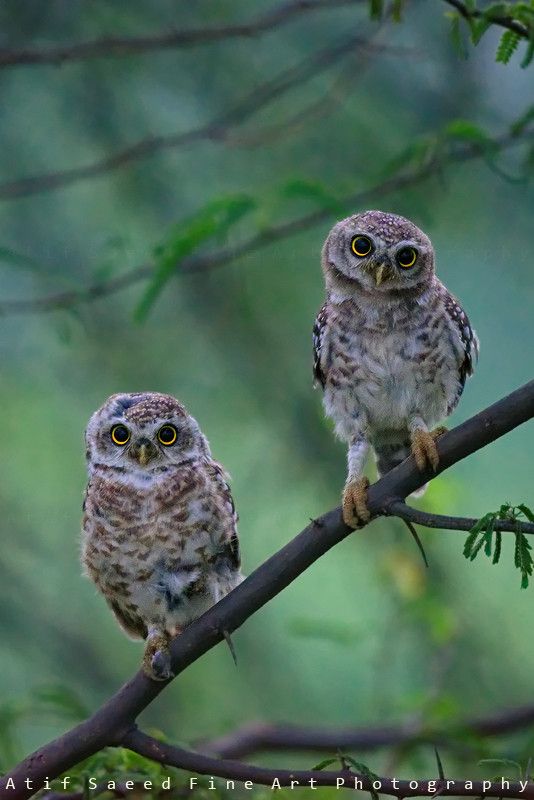 She fed the baby using tweezers held in the puppet’s mouth, and then returned it to a quiet incubator away from human activity.
She fed the baby using tweezers held in the puppet’s mouth, and then returned it to a quiet incubator away from human activity.
The young owl has now progressed to feeding itself, so we’ve moved it to a mew behind the care center where it can see – but not physically interact with – an adult Great Horned Owl that is recovering from an injury. In the absence of the baby’s parents, the puppet and this adult bird serve as examples meant to show the young bird what it means to be a Great Horned Owl. If all goes well, we will eventually move the owl to a flight cage where it can hunt and fly with other members of its species in preparation for release back into the wild.
Great Horned Owls grow quickly! This photo was taken 20 days after the baby arrived at the care center as a small, partially bald nestling (pictured at top) - Tinsley HunsdorferThe complex and uncertain nature of this process highlights why it’s best to keep baby birds in the wild with their parents if at all possible, though this particular owl did need to come to the care center – we couldn’t locate its parents. While Audubon staff and volunteers do their best to raise the baby birds in our care, the birds’ parents are the true experts at how to guide them into adulthood.
While Audubon staff and volunteers do their best to raise the baby birds in our care, the birds’ parents are the true experts at how to guide them into adulthood.
Help bird families this nesting season by taking a look at our guide to what to do if you find a baby bird. The most important thing to remember is that just because a baby bird is found on the ground doesn’t generally mean it’s in trouble. Fledglings are supposed to spend time on the ground, and even if a nestling has fallen out of its nest prematurely, it’s best to place it in or near its nest rather than remove it from the wild.
Share this:
AllAll Blog Posts
Feeding little owlets: bjorn_varulv — LiveJournal
Owlets are born covered in white down and blind.Feeding such an owlet is a difficult and responsible task. It is better if specialists do this, but specialists in feeding owls are a very rare thing in the world and in our country in particular.
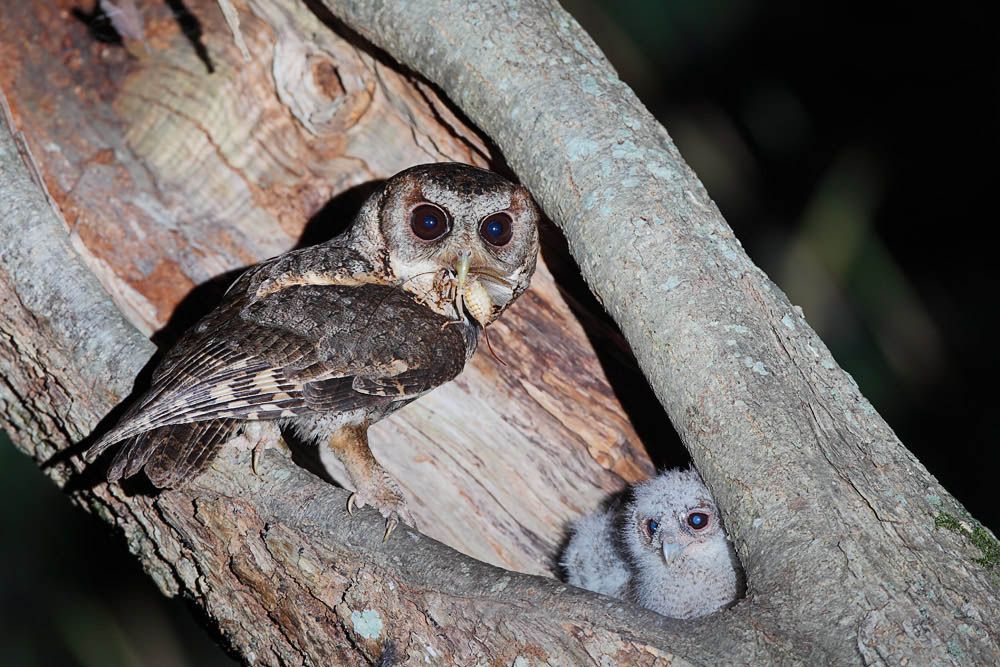 There are almost no correct recommendations on the Internet, and those that are, unfortunately, are most often based on information copied from each other and contain the same errors. Which in the end can lead to the death of the chicks.
There are almost no correct recommendations on the Internet, and those that are, unfortunately, are most often based on information copied from each other and contain the same errors. Which in the end can lead to the death of the chicks. It must be understood that owls have a very specific digestion, which is different from the digestion of other birds of prey. And advice on rearing diurnal predators is not good for owlets, if only for the simple reason that owlets, unlike falcons and hawks, do not have goiter. Their digestive system is arranged differently, so it is important to listen to the recommendations of an experienced specialist in owls, and not in birds of prey in general.
The photo shows a Tawny Owl owlet just hatched from an egg.
How to maintain?
Newborn owlets need constant heating: the temperature should be maintained at about 37 degrees Celsius. Owlets can be placed, for example (as the simplest option), in a "nest" made of a box and a terry towel, and heating is carried out using a 40-60 W incandescent lamp, after setting it at such a distance from the nest to provide the desired temperature. It is dangerous to both overheat and overcool the chicks.
It is dangerous to both overheat and overcool the chicks.
How often to feed?
Owls need to be fed very often during the first few days. If these are small species of owls, such as splyushki or owls, you need to feed every half an hour with a break for a night's sleep no longer than four hours. Larger ones, such as Tawny Owls, Long-eared and Short-eared Owls, need to be fed every hour with a break for a night's sleep of no longer than five hours. As you grow older, the frequency of feeding should be reduced. Monthly owls are enough to feed 5-6 times a day.
You should always feed when the owls require food. Until full saturation. Owlets eat a lot and a lot. For example, a week-old eared owl owlet eats five or six quail breast fillets per day, that is, about half of its own weight.
The main rule: it is impossible to overfeed the owlets! But underfeeding - easily.
What to feed?
Owlets grow rapidly and the slightest mistake in the diet and diet instantly affect their health.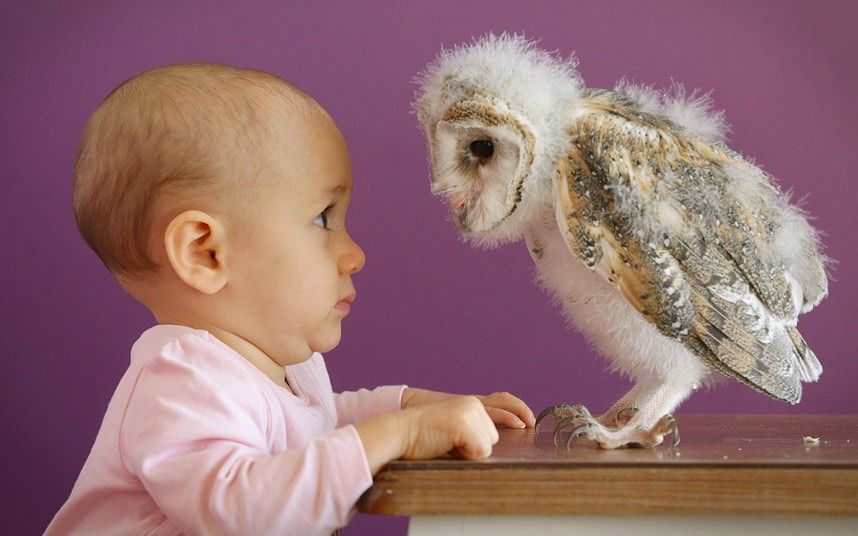
Owl food must be nutritious and contain sufficient amounts of essential vitamins, trace elements, minerals and amino acids. An ideally balanced food for owls in this respect is the meat of domestic quails. This meat contains a lot of calcium, which is extremely important for the body of owls, especially in the first days of life.
Almost all advice on feeding owls that can be found on the Internet contains a serious mistake: they recommend feeding owls with meat with bones and hair, regardless of the age of the owlet.
But the fact is that the body of very young owlets is not yet able to get rid of undigested parts of food, that is, newborn owlets are not able to form and shed a pellet.
The mother owl feeds her newborn babies by carefully choosing the meat, pinching off small pieces like with tweezers. The first few days of life, owls need to be fed with muscle fibers alone, and quail breast fillets are best suited for this purpose. When the owls begin to open their eyes, you can gradually start feeding pieces of meat with a small amount of wool, fluff and small, not hard bones.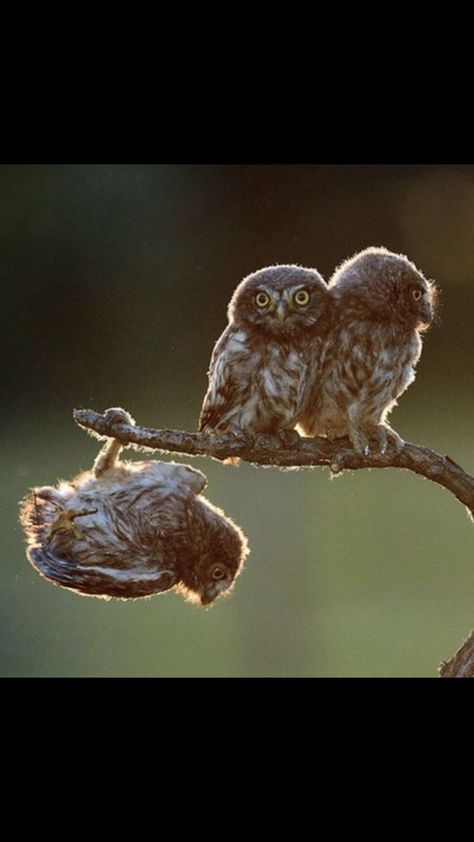 To begin with, you can feed the owlet a quail neck cut into pieces, and then be sure to wait for the owlet to drop the pellet. This should happen within six to eight hours of feeding the first meal with solids. During this period, you need to continue to give only muscle fibers. If there are no pellets during the day, you can give another quail neck or a similar small amount of small, not sharp bones and wool or fluff, and wait again. If the pellet does not appear for the second time, it is necessary for another two or three days not to give food with solid particles, to feed only soft ones. During this time, the owlet will grow up and his body should begin to cope with the removal of undigested particles to the outside.
To begin with, you can feed the owlet a quail neck cut into pieces, and then be sure to wait for the owlet to drop the pellet. This should happen within six to eight hours of feeding the first meal with solids. During this period, you need to continue to give only muscle fibers. If there are no pellets during the day, you can give another quail neck or a similar small amount of small, not sharp bones and wool or fluff, and wait again. If the pellet does not appear for the second time, it is necessary for another two or three days not to give food with solid particles, to feed only soft ones. During this time, the owlet will grow up and his body should begin to cope with the removal of undigested particles to the outside.
The same rule applies to weakened owlets who, for some reason, lag behind in development. Recently, there was a case when people who had never fed owls undertook to feed the owls. Newborn owlets were fed too infrequently and insufficiently nutritious food, which soon led to intestinal atony in one of them. Then the weakened owlets began to be fed with chickens cut into pieces - along with bones and fluff. Two of the four owls were severely retarded in development, and one also had characteristic fractures of both legs and wings, which happen when the chicks are clumsily picked up, lifting by the limbs for fear of crushing. The organisms of these babies could not cope with the formation of the pellet, and although the people who fed them saw that there were no pellets, they continued to give pieces of chicken with bones and fluff, believing that maybe the bones were being digested. As a result, weakened babies died, painfully trying to burp the bones accumulated in their bellies - the first at the age of 7 days, the second at 10. The third baby also began to lag behind in development, fell ill with rickets, but still he was larger and stronger and after a while pushed out the accumulated in the stomach a lump of bones and chicken down. And only one of the four developed normally, perhaps because initially he received more food and this allowed his body to cope with the test.
Then the weakened owlets began to be fed with chickens cut into pieces - along with bones and fluff. Two of the four owls were severely retarded in development, and one also had characteristic fractures of both legs and wings, which happen when the chicks are clumsily picked up, lifting by the limbs for fear of crushing. The organisms of these babies could not cope with the formation of the pellet, and although the people who fed them saw that there were no pellets, they continued to give pieces of chicken with bones and fluff, believing that maybe the bones were being digested. As a result, weakened babies died, painfully trying to burp the bones accumulated in their bellies - the first at the age of 7 days, the second at 10. The third baby also began to lag behind in development, fell ill with rickets, but still he was larger and stronger and after a while pushed out the accumulated in the stomach a lump of bones and chicken down. And only one of the four developed normally, perhaps because initially he received more food and this allowed his body to cope with the test.
When should one start feeding "normal owl food"? The rule is this: if the owlet does not lie, but sits confidently, actively tries to swallow his fingers when they touch the beak, if his eyes have already begun to open, you can give a quail neck and wait for the first guess. This is like an indicator of whether the owlet's body is ready for coarser food.
Rougher food is newborn mice, minced quail, ground together with bones (tubular bones must first be removed so that sharp fragments do not form!), adult mice cut into pieces. A little later, you can start giving pieces of day-old chickens - there are fewer nutrients in such feed, and there are a lot of bones and fluff.
At the age of one month, the owlet should already receive ordinary owl food, that is, for example, owl owls are able to swallow small mice whole.
(Of course, we are not talking about feeding owls with live animals - as well as adult owls kept in captivity.)
Do I need to drink water?
Owlets need to get enough fluids so that their kidneys can successfully remove harmful substances formed during the life of the body.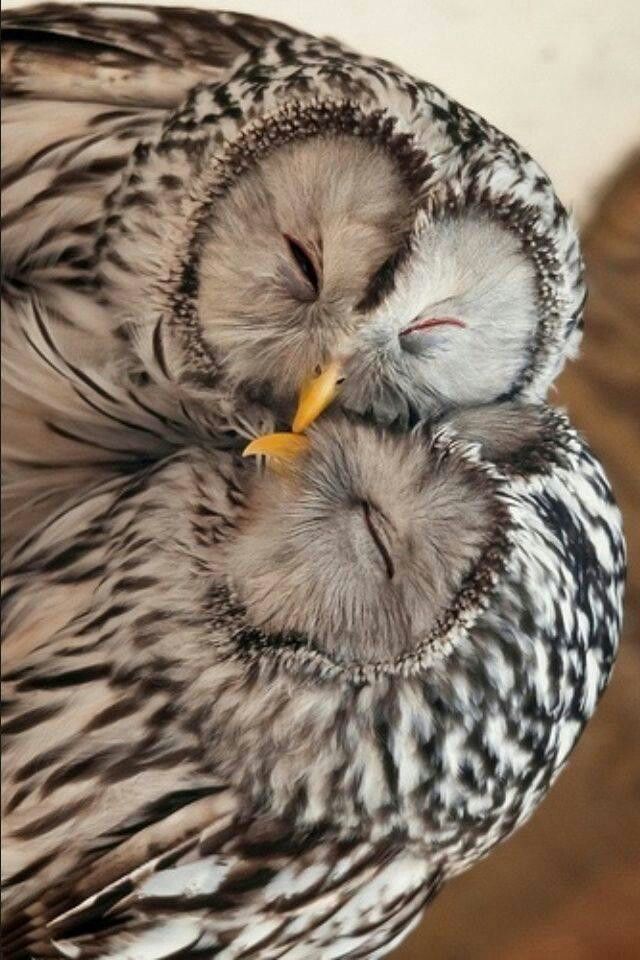 You need to water the owls carefully so that the owlet does not inhale the liquid. You can give water drop by drop from a pipette on the side of the beak, but the easiest way is to dip pieces of food in water before feeding them.
You need to water the owls carefully so that the owlet does not inhale the liquid. You can give water drop by drop from a pipette on the side of the beak, but the easiest way is to dip pieces of food in water before feeding them.
What about vitamins?
When feeding an owlet with quality food, such as meat of domestic quail, additional vitamin preparations are not required. It must be remembered that synthetic vitamins are easy to overdose, and an overdose of vitamins is more dangerous than their lack.
As a natural source of vitamins, it can be recommended to feed raw chicken liver to owlets once a day. This is quite enough to maintain balance, synthetic vitamins for the prevention of beriberi do not need to be used.
Since a growing body requires a lot of calcium, it is recommended to use the Calcium-Sandoz drink as drinking water. Tablets for the preparation of this drink are sold in a human pharmacy. They must be diluted at the rate of a quarter tablet per 100 ml of water, and of course you need to wait until the gas comes out. You can start giving your owlet this drink in place of regular water from a week old until its plumage is fully formed.
You can start giving your owlet this drink in place of regular water from a week old until its plumage is fully formed.
It is very important for a growing owlet to receive a sufficient amount of ultraviolet light every day, because under its influence the body produces vitamin D, which promotes the absorption of calcium. It is best to provide the owlet with a safe stay in sunny penumbra, for example, the “nest” should be covered with two or three layers of cotton tulle and in this form you can sunbathe the owlets for two to three hours a day. Of course, you need to remember that owls should not be left unattended on a balcony or in a personal plot. But I will write a separate article about security.
And remember that foster owlets should not be released into the wild! They cannot be released even if they were "trained to hunt" at home, that is, they were baited on live mice. Anyway, in nature, such owls have no chance to survive and adapt to a normal life.
So please don't feed the owls with live animals, don't teach them to kill, they don't need it, and this is unnecessary cruelty.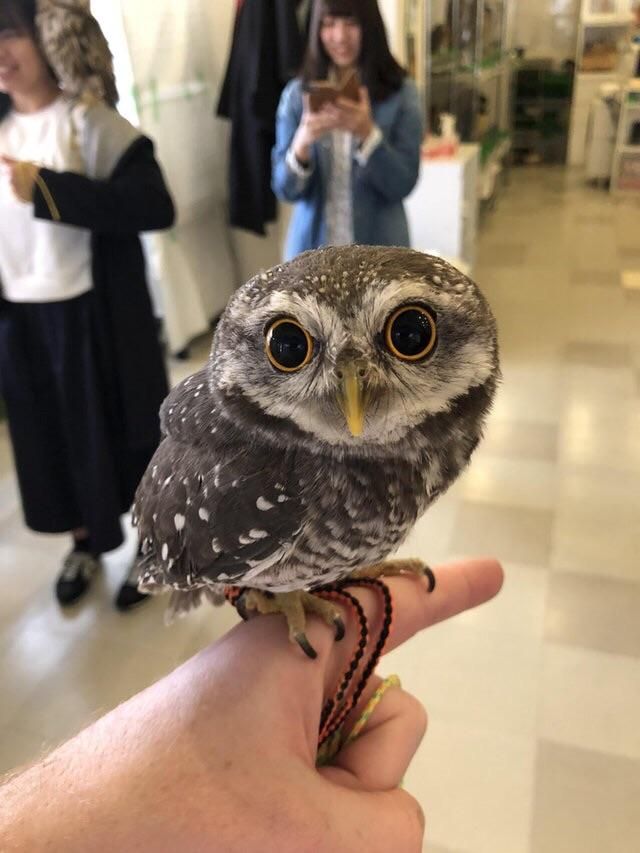
I wish good luck to all bird rescuers and health to your pupils!
Keeping owls at home
Today it has become almost fashionable to keep various exotic animals and birds at home. If earlier lovers were limited to rare breeds of dogs and cats, now in an ordinary city apartment you can meet crocodiles, reed cats and birds of prey.
Here we will stop on birds of prey.
Mostly they give birth to owls. It is very difficult to pass by a cute fluffy creature with huge eyes. People buy owls at the infamous "Bird Market" or bring owls from the forest, believing that they are "lost", "fell out of the nest." You can talk about the "Bird Market" endlessly. Obsessed with a thirst for profit, sellers recklessly lie to buyers in the hope of a profitable sale. Naturally. After all, few people want to keep a bird at home, which spoils a lot, yells at night and eats only mice. Moreover, it has all the "charms" of a wild animal - as a rule, sellers assure that owls are grown in nurseries, but in reality - all birds are caught by poachers.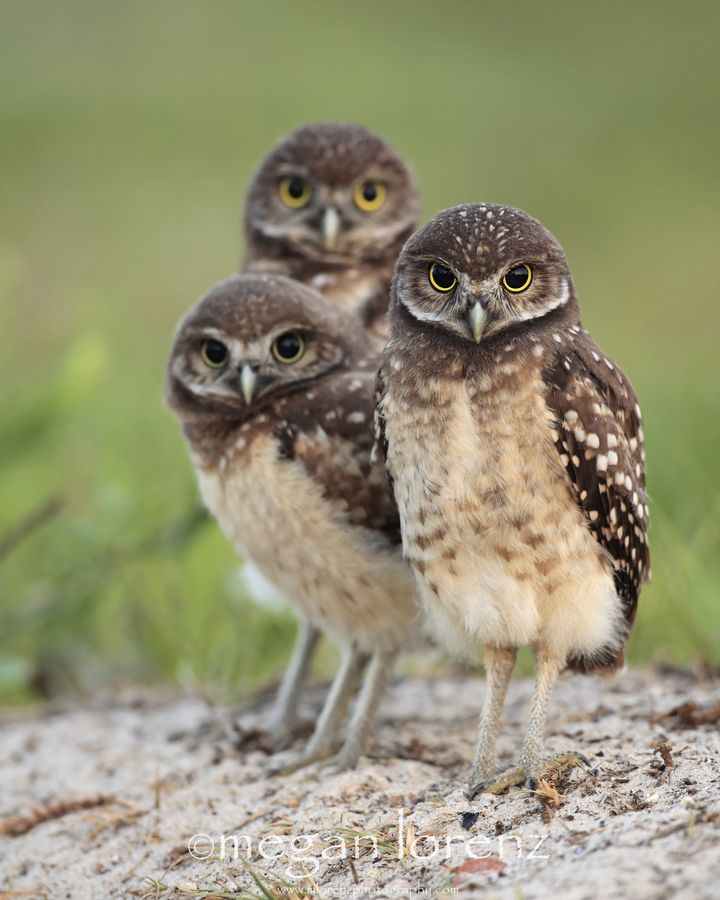 So people buy a pet, literally “stuffed” with helminths and various infections. And in birds, most diseases are asymptomatic and rapidly - yesterday the bird ate well and was active, and today it lies at the bottom of the cage.
So people buy a pet, literally “stuffed” with helminths and various infections. And in birds, most diseases are asymptomatic and rapidly - yesterday the bird ate well and was active, and today it lies at the bottom of the cage.
Photo 1. Owl
Therefore, before getting an owl, think carefully, weigh your possibilities - do they match your desires?
So, owls. The owl is a nocturnal predator. This already says a lot - the main activity of the bird is precisely in the late evening, at night and in the early morning. At this time, owls hunt in nature. So in captivity it will be the same - from evening to morning the owl will rattle something, shout (especially during the mating season) preventing you from resting. So it is best to start an owl for people who lead a predominantly “nightly” lifestyle. Now let's deal with the concept of "predator". It is clear that such a bird cannot be fed with cereals, predators eat meat. But even here there is a difficulty - the owl's digestion is arranged in such a way that it needs to eat the whole carcass of a rodent or bird as a whole - with feathers, fur, bones. Accordingly, feeding chicken or beef disappears - get ready for the purchase of mice, day old chickens, quails. And they cost a lot and getting in the right amount is a problem.
Accordingly, feeding chicken or beef disappears - get ready for the purchase of mice, day old chickens, quails. And they cost a lot and getting in the right amount is a problem.
Photo 2. Little Owl
But, let's say that the nightly cries and the specific diet of owls do not frighten you and you still want to get an owl. Then, first of all, you need to decide what kind of owl you can keep. The fact is that there are many and different owls - from small-sized owls (photo) to a huge owl (photo). Medium-sized owls are the gray owl (photo) and the Ural owl (photo). But still, for an ordinary city apartment, the owls are too big, they will need a lot of space for flights, and even if you have spacious rooms, the owl will still upholster the feather. Therefore, it is optimal to keep long-eared owls (photo), short-eared owls (photo) barn owls (photo) or the aforementioned owls.
Photo 3. Barn owl
Before you buy an owl, arrange an apartment for it in a suitable way.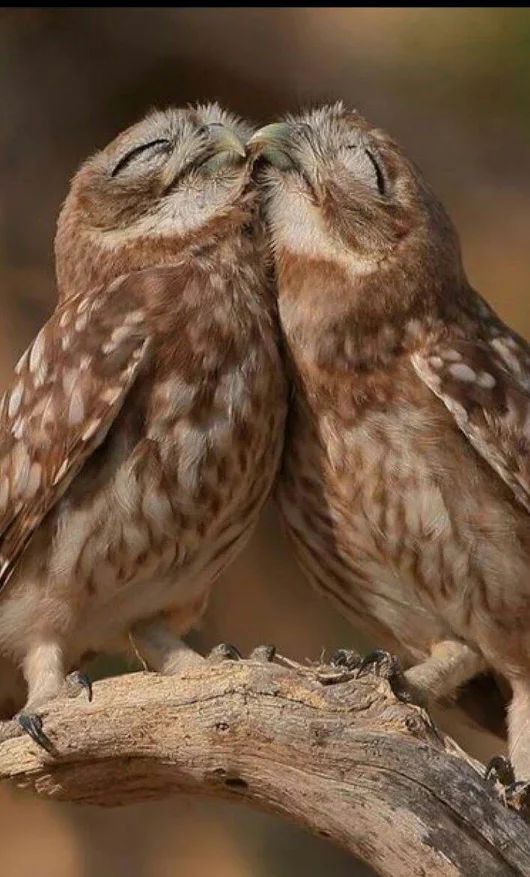 Yes Yes. Your apartment, not a cage in the apartment, because You can't keep owls in cages. An owl will certainly beat a feather on the bars, injure the wax (a soft place above the beak), and earn namin on its paws.
Yes Yes. Your apartment, not a cage in the apartment, because You can't keep owls in cages. An owl will certainly beat a feather on the bars, injure the wax (a soft place above the beak), and earn namin on its paws.
How to prepare a room for an owl.
First of all, you should remove all objects that the owl can knock over, tear, stain. Owls love to play, so keep in mind that you will have to strictly monitor the location of your belongings, especially socks and documents. Leave unattended - the owl will certainly pick up the "toy" and goodbye passport! The tulle on the windows needs to be replaced with thick curtains, because. in tulle, an owl can easily get tangled and, while it fights, it will break its paws or wings, or simply die, hanging upside down for several hours. Large mirrors should be removed or curtained (windows too), otherwise the owl may be seriously injured trying to fly through the glass.
Photo 4. Eagle owls
Walls should be nailed with "perches" - wooden or iron "sticks", always upholstered with something soft - for example, artificial grass "astroturf" or, at worst, carpet.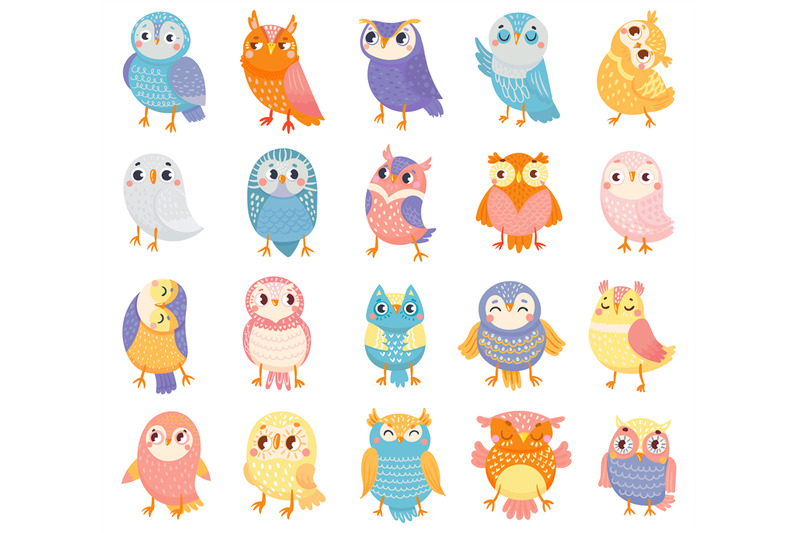 Also, think over a place for a bath in advance - owls love to wash, for this they are given shallow wide containers of water (cat litter trays with high sides are perfect).
Also, think over a place for a bath in advance - owls love to wash, for this they are given shallow wide containers of water (cat litter trays with high sides are perfect).
So, the place is prepared. Now you need to think about food for the owl. As I wrote above, owls must be fed with the carcasses of rodents and birds, and freshly slaughtered. Of course, you can also give thawed carcasses, but “live” food must be present in the diet, because. frozen meat loses some essential trace elements.
Photo 5. Long-eared owl
You can buy rodents in a pet store, but the prices there “bite” and most often there is not the right amount. After all, even a medium-sized eared owl eats at least two mice per day. So it is better to buy mice in bulk at the Bird Market. You can also buy day old chicks and quails there. Keep in mind that if mice and chickens can be given to an owl without carcass preparation, then the quail must be opened and the insides carefully removed and the head and legs cut off.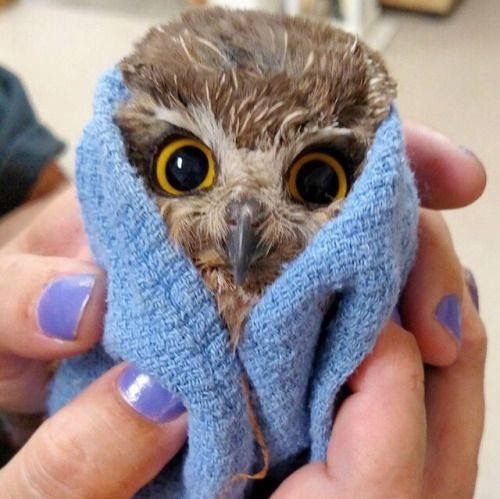 The fact is that these birds often have various diseases that can be transmitted to your owl during a meal.
The fact is that these birds often have various diseases that can be transmitted to your owl during a meal.
Photo 6. Long-eared owl chick
Do you still want to have an owl at home? Then about the purchase:
Owls must be purchased in official nurseries, making sure that when buying you have all the documents for an owl and the number on the document matches the number stamped on the ring (birds are ringed in nurseries). Thus, you will be insured against the removal of birds (catching and keeping wild birds is prohibited by law), moreover, birds from nurseries are more tame and healthy. Although immediately after acquiring an owl, it is necessary to show the owl to a veterinarian, pass the necessary tests, just in case, take an x-ray. By the way, not every veterinary clinic has a veterinarian who understands birds. In Moscow, there is a veterinarian-ornithologist at the White Fang clinic and at the Moscow Zoo, in the Moscow region, birds are taken at the Cobra clinic, which is located in Krasnogorsk.
Well, let's assume that the room for the owl has been equipped, the food has been bought, the visit has been agreed with the veterinarian, and we have gone to the nursery for the owl.
As a rule, in the nursery you will be offered a choice of the most common species - this is a long-eared owl, a short-eared owl, a gray owl, an owl (there is also a gray owl (photo), but it is large for an apartment) and various owls. When choosing the type of owl, you should remember that even a small eared owl needs a lot of space (at least a room), so I strongly do not recommend purchasing long-tailed owls, bearded owls, and even more so an eagle owl. Small owls are no worse than larger species, they are just as sociable and playful, and they are not inferior in beauty to plumage. It is better to buy a very young owlet, he will quickly get used to his hands, and like all cubs, owlets are very funny. It is quite easy to distinguish a chick from an adult - the owls are covered with delicate fluff, the older owls are already beginning to grow with an “adult” feather, but their tails are noticeably shorter than those of adults, and in some places the fluff is still preserved.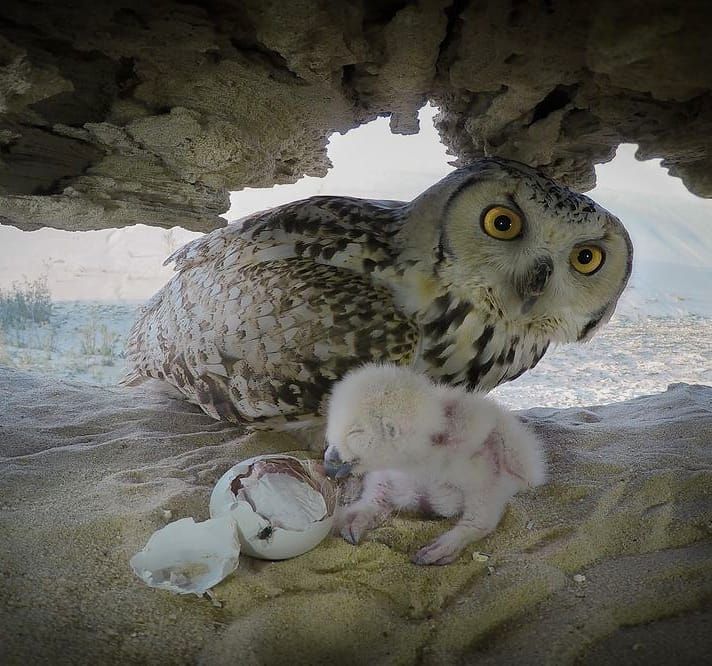 It is necessary to transport an owl in a closed spacious box (a cat carrier is not the best option, because the owl will see through the carrying grate, respectively, it will get frightened out of habit and begin to fight). At the bottom of the box you need to lay a soft diaper, cut a few very small holes in the walls of the box for air access. If an owl is purchased in winter, then the time spent on the street should be limited as much as possible, otherwise there is a risk of catching a cold.
It is necessary to transport an owl in a closed spacious box (a cat carrier is not the best option, because the owl will see through the carrying grate, respectively, it will get frightened out of habit and begin to fight). At the bottom of the box you need to lay a soft diaper, cut a few very small holes in the walls of the box for air access. If an owl is purchased in winter, then the time spent on the street should be limited as much as possible, otherwise there is a risk of catching a cold.
When you get home, don't scare the owl, let it look around. To do this, simply open the box and leave the bird alone for a while.
After a couple of hours, you can offer food and water to the owlet. Sometimes the owls cannot yet tear apart the carcasses, so the carcass must be finely chopped. Place the water so that the owlet sees it perfectly - when he pays attention to the bathing suit - chat in the water with your hand, thus showing the presence of water in the container.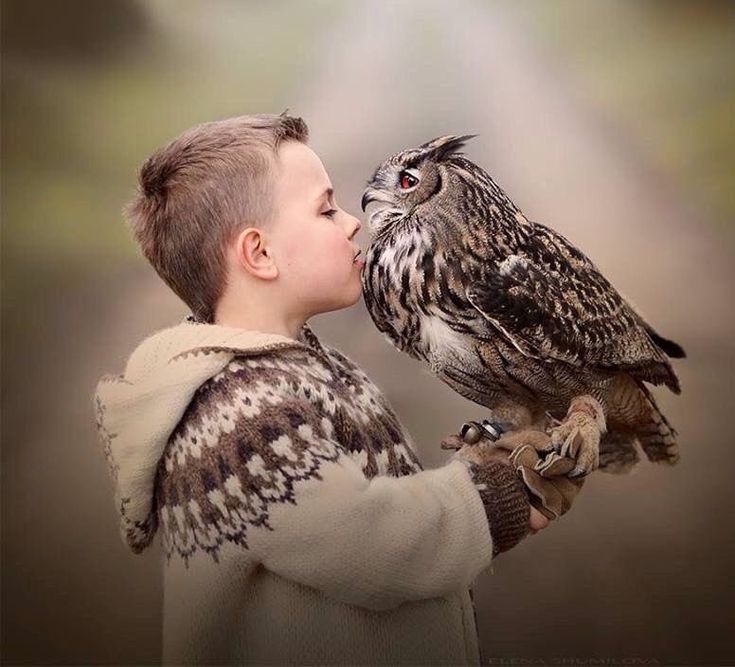 Over time, the owlet will determine whether there is water, but while it is small and in an unusual environment, you should pay much more attention to it, without disturbing or frightening it - try not to pick it up, do not make excessively sudden movements, do not shout.
Over time, the owlet will determine whether there is water, but while it is small and in an unusual environment, you should pay much more attention to it, without disturbing or frightening it - try not to pick it up, do not make excessively sudden movements, do not shout.
Always offer food from your hands - this way the owl will get used to you faster.
Pay close attention to your pet's digestion and appearance. After each meal, the owl should discard the pellet. The pellet is the undigested bones, wool and feathers that the birds regurgitate about 10 hours after feeding. If there is no pellet, this is a reason to worry about the health of the pet. You should also inspect the pellets - they should not have blood on them, the pellet should not smell bad. Pay attention to the droppings - normal owl droppings are a white "puddle" with a little bit of darker, harder droppings. If the droppings become foul-smelling, yellow or brown, or thinner, contact your veterinarian.